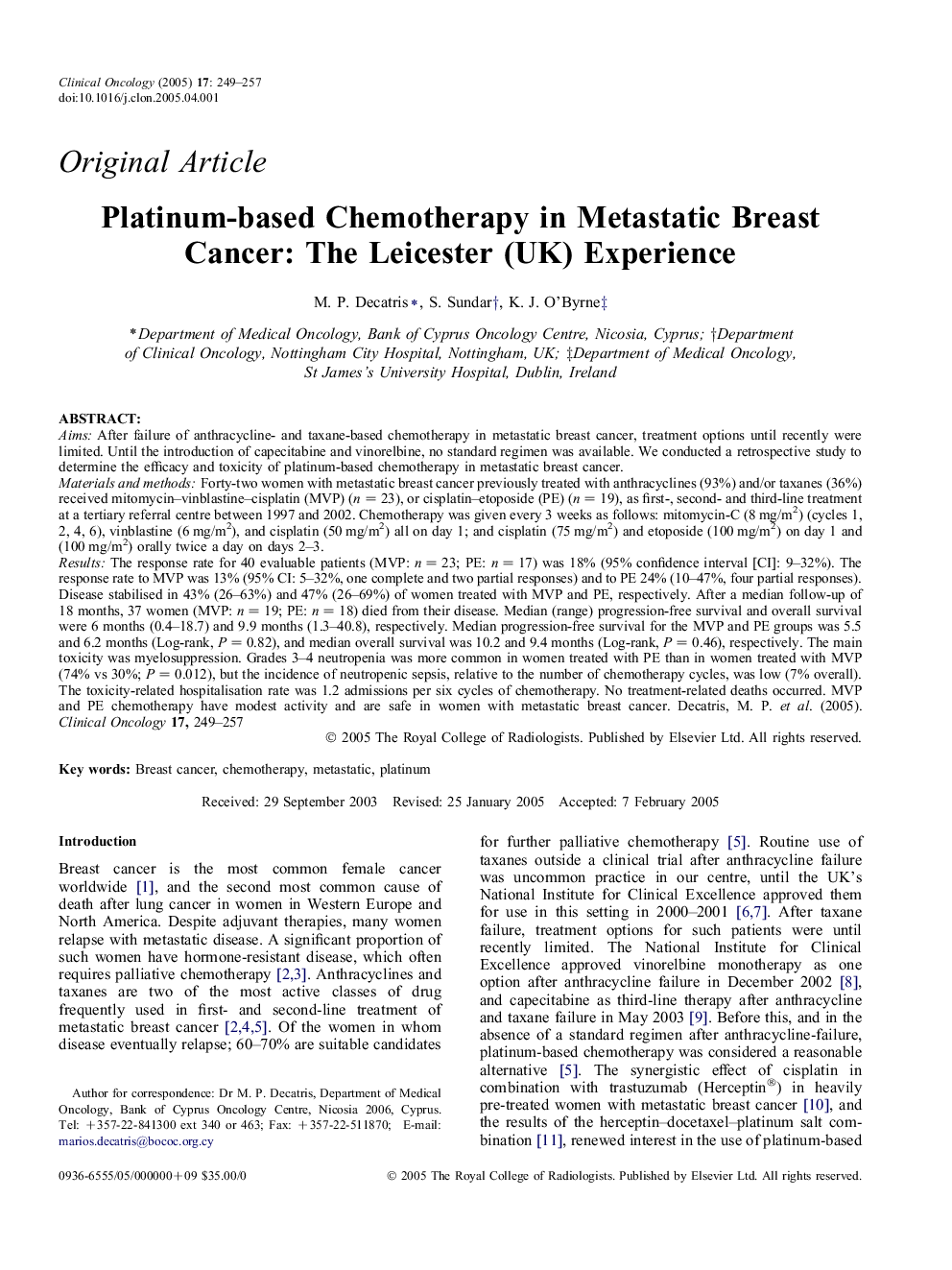| Article ID | Journal | Published Year | Pages | File Type |
|---|---|---|---|---|
| 9601004 | Clinical Oncology | 2005 | 9 Pages |
Abstract
The response rate for 40 evaluable patients (MVP: n = 23; PE: n = 17) was 18% (95% confidence interval [CI]: 9-32%). The response rate to MVP was 13% (95% CI: 5-32%, one complete and two partial responses) and to PE 24% (10-47%, four partial responses). Disease stabilised in 43% (26-63%) and 47% (26-69%) of women treated with MVP and PE, respectively. After a median follow-up of 18 months, 37 women (MVP: n = 19; PE: n = 18) died from their disease. Median (range) progression-free survival and overall survival were 6 months (0.4-18.7) and 9.9 months (1.3-40.8), respectively. Median progression-free survival for the MVP and PE groups was 5.5 and 6.2 months (Log-rank, P = 0.82), and median overall survival was 10.2 and 9.4 months (Log-rank, P = 0.46), respectively. The main toxicity was myelosuppression. Grades 3-4 neutropenia was more common in women treated with PE than in women treated with MVP (74% vs 30%; P = 0.012), but the incidence of neutropenic sepsis, relative to the number of chemotherapy cycles, was low (7% overall). The toxicity-related hospitalisation rate was 1.2 admissions per six cycles of chemotherapy. No treatment-related deaths occurred. MVP and PE chemotherapy have modest activity and are safe in women with metastatic breast cancer.
Related Topics
Health Sciences
Medicine and Dentistry
Oncology
Authors
M.P. Decatris, S. Sundar, K.J. O'Byrne,
